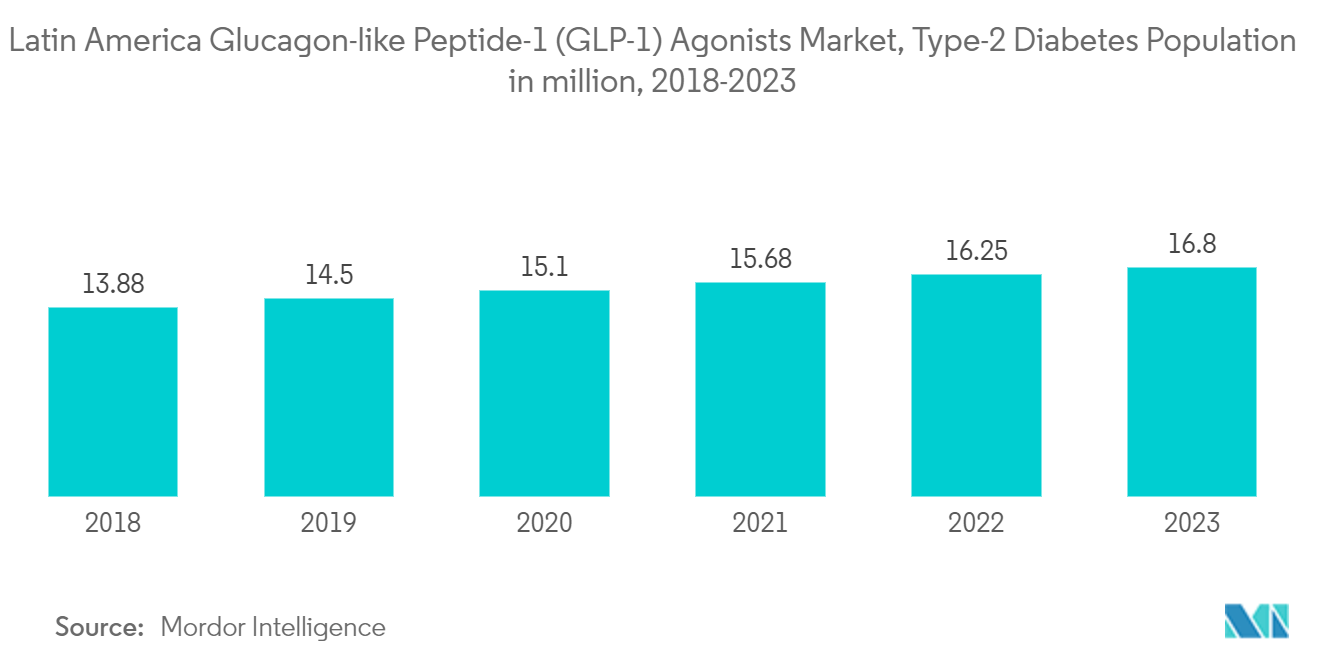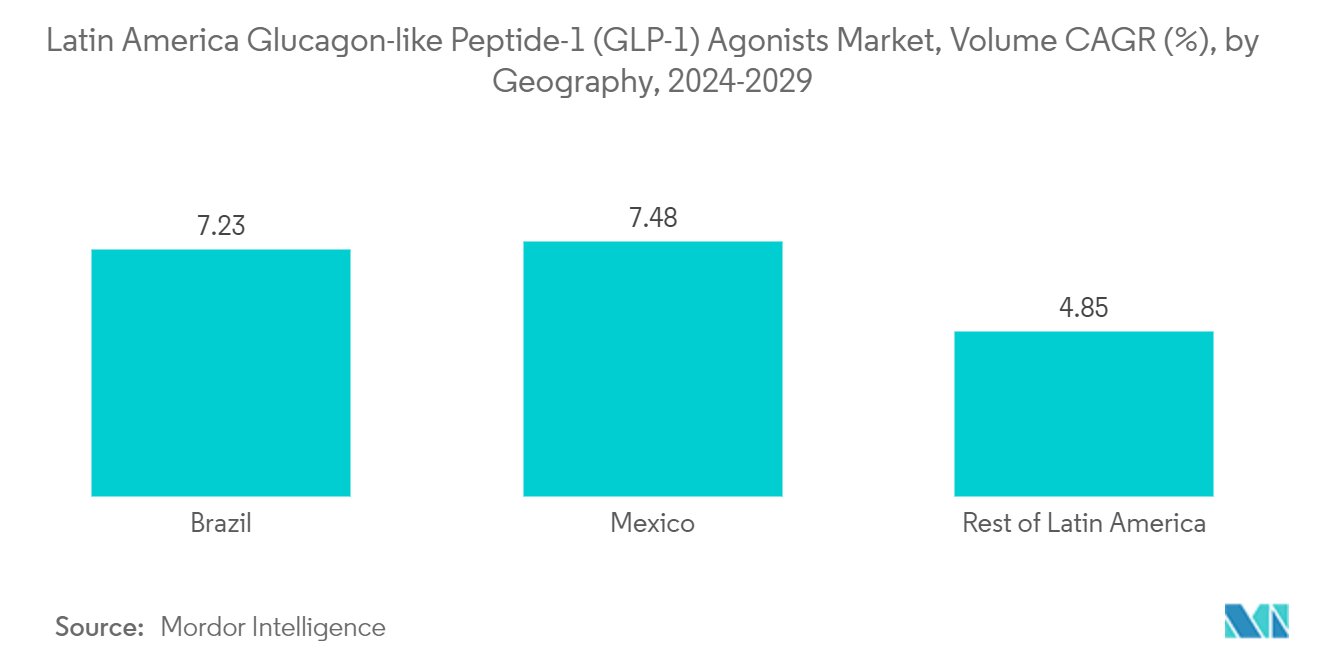Market Trends of Latin America Glucagon-like Peptide-1 (GLP-1) Agonists Industry
The Dulaglutide Segment holds the highest market share in the Latin America Glucagon-like Peptide-1 (GLP-1) Agonists Market in the current year
The dulaglutide segment holds the highest market share in the Latin America Glucagon-like Peptide-1 (GLP-1) Agonists Market in the current year and is expected to register a CAGR of more than 9% over the forecast period.
GLP1RAs have been available internationally and are recommended for use when escalation of treatment for type 2 diabetes is required after metformin and lifestyle management. They can be safely used with all other glucose-lowering therapies except vildagliptin. Dulaglutide (Trulicity) is a weekly subcutaneous GLP 1 RA that is highly effective for reducing HbA1c with additional weight loss and cardiorenal protection benefits. Therapy with dulaglutide allows many patients to reach and maintain target HbA1c without insulin and/or sulfonylureas, eliminating the associated hypoglycemia risk. GLP1RAs elicit greater weight reduction and are recommended over SGLT2 inhibitors when cerebrovascular disease other than heart failure or renal disease predominates.
According to the IDF Diabetes Atlas 2021, 15.7 million adults, or 10.5%, were living with diabetes in Brazil. The cost of diabetes-related health expenditures in Brazil is the third-highest in the world. In addition, 18 million adults have impaired glucose tolerance, which places them at high risk of developing type-2 diabetes. Additional data on glycemic control in Brazil show that only 25% met the therapeutic goal of glycated hemoglobin (HbA1c) less than 7% before the pandemic, as recommended by the Brazilian Diabetes Society.
When diabetes is undetected or inadequately treated, people with diabetes are at risk of serious and life-threatening complications, such as heart attack, stroke, kidney failure, blindness, and lower-limb amputation. These result in reduced quality of life and higher healthcare costs, which lead to a greater need for access to care.
Brazil has implemented a set of reforms over the past decade to improve the distribution of doctors, develop new forms of service organization, introduce new financing models, and implement a range of quality improvement initiatives and policy frameworks to overcome risk factors such as obesity and emerging pandemic threats.
Owing to the rising rate of obesity, the growing genetic factors for type-2 diabetes, and the increasing prevalence, it is likely that the market will continue to grow.

Mexico is expected to register the highest CAGR in the Latin America Glucagon-like Peptide-1 (GLP-1) Agonists Market over the forecast period
Mexico is expected to register the highest CAGR of more than 6.5% in the Latin America Glucagon-like Peptide-1 (GLP-1) Agonists Market in the forecast period.
GLP-1 RAs can be taken alone or in combination with other treatments for type-2 diabetes to improve blood glucose management, i.e., time in range. In addition to lowering blood glucose, they benefit heart health by reducing the risk of heart attack, stroke, and heart-related death. This is important because people with type 2 diabetes are at substantially higher risk of heart disease than those without diabetes.
Lack of health insurance deprives the poor of access to services and puts them at risk of financial hardship. To protect the people against excessive health expenditures, many countries like Mexico have implemented mechanisms such as community-based health insurance, national health insurance, and targeted public health insurance. Mexico has multiple health insurance providers. The Instituto de Seguridad y Servicios Sociales de los Trabajadores del Estado (State Employee's Social Security and Social Services Institute, ISSSTE) provides coverage for government employees, and the Instituto Mexicano del Seguro Social (Mexican Social Security Institute, IMSS) covers private-sector employees.
The Seguro Popular (People's Insurance) was launched to protect the working-age population against steep healthcare costs. Enrolment in the Seguro Popular is independent of health status or pre-existing illness; there is no co-payment in accordance with the type of health care received; and family contributions are determined solely by the ability to pay. The Government of Mexico partnered with numerous private companies to utilize their supply chain (manufacturing, distribution, and retailers) to ensure low prices for drugs. The various initiatives by the Mexican government are expected to drive the market's growth.


